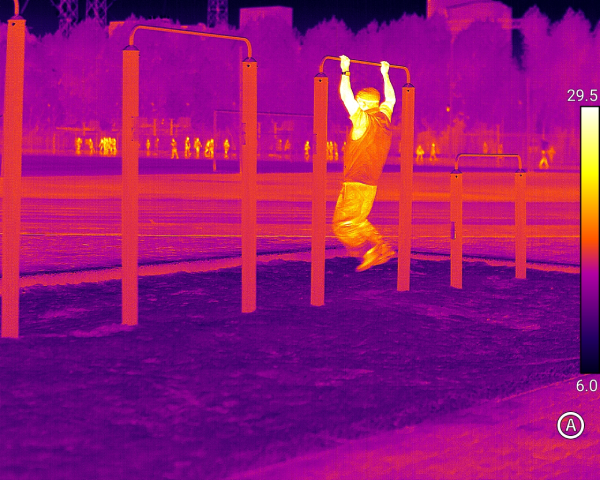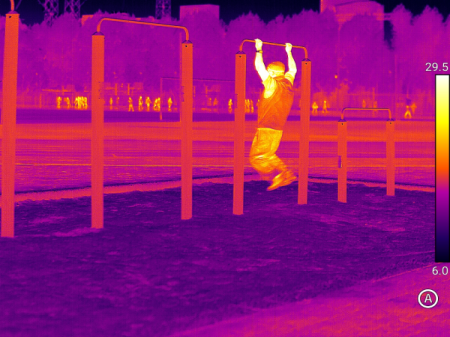Thermal imaging technology has revolutionized various industries, from building inspections and medical diagnostics to military applications and firefighting. Two primary types of thermal imaging systems are active and passive thermal imaging. While both rely on detecting infrared radiation to create thermal images, they work in fundamentally different ways. Understanding the differences between these two technologies is essential for choosing the right solution for specific applications. In this article, we'll dive into the key distinctions between active and passive thermal imaging, their benefits, and their typical uses.
What is Passive Thermal Imaging?
Passive thermal imaging refers to the technology that detects and visualizes infrared radiation emitted naturally by objects. Every object, whether it's a living being, a building, or a machine, emits infrared radiation based on its temperature. The higher the temperature, the more infrared radiation is emitted.
How Passive Thermal Imaging Works:
1.Natural Radiation Detection: Passive thermal cameras work by detecting infrared radiation emitted by objects in their environment. These cameras don’t emit any radiation themselves, making them "passive.”
2.Temperature Mapping: The camera detects variations in temperature and translates them into a visible thermal image. Hotter objects appear brighter (or in a different color, depending on the color palette), while cooler objects appear darker.
Applications of Passive Thermal Imaging:
Building Inspections: Identifying heat loss through walls, windows, or insulation gaps.
Security & Surveillance: Detecting heat signatures of people or animals, even in low light conditions.
Medical Diagnostics: Monitoring body temperature patterns for detecting inflammation or abnormal conditions.
Advantages of Passive Thermal Imaging:
No Need for External Light Sources: Passive systems work in total darkness since they detect the infrared radiation naturally emitted by objects.
Non-invasive: Since it only detects the heat emitted by objects, it doesn’t interfere with the object itself.
Lower Cost: Passive thermal cameras are generally more affordable because they don’t require complex external light sources.

What is Active Thermal Imaging?
In contrast to passive systems, active thermal imaging involves emitting an artificial infrared light or heat source towards the object being examined. This infrared energy is then reflected off the object and detected by the thermal camera, creating a thermal image.
How Active Thermal Imaging Works:
1.External Infrared Source: Active thermal cameras emit infrared radiation toward the object or scene. This radiation bounces back to the camera.
2.Reflection Detection: The camera detects the reflected infrared radiation, which is then converted into a thermal image. This process provides information about how the object absorbs and reflects infrared light.
Applications of Active Thermal Imaging:
Industrial Inspections: Used in environments where there is limited ambient infrared radiation or where specific surfaces need to be highlighted.
Night Vision: Active thermal imaging is commonly used in military and law enforcement applications for surveillance in low or no light conditions.
Research and Development: In labs or research settings, where precise control over infrared radiation is needed to study material properties.
Advantages of Active Thermal Imaging:
Better for Low Contrast Scenes: Active thermal imaging can improve contrast and provide clearer images in environments where natural infrared radiation is insufficient.
Enhanced Sensitivity: Active systems can sometimes produce more detailed images because they can be calibrated to reflect the exact temperature ranges being studied.
Versatile Applications: In certain cases, active systems are preferable in research, high-tech environments, or situations where detailed and enhanced imaging is needed.
Feature | Active Thermal Imaging | Passive Thermal Imaging |
Infrared Radiation Source | Active systems emit their own infrared radiation. | Passive systems detect natural infrared radiation emitted by objects. |
Energy Source | Requires an external infrared light or heat source. | Does not require an external light source. |
Operating Conditions | Can operate in low-light environments but needs external infrared sources. | Operates in total darkness or daylight, depending on temperature differences. |
Image Quality | Provides clearer images in low contrast or highly reflective environments. | Relies on the natural temperature gradient and may struggle with low contrast situations. |
Typical Uses | Military, night vision, industrial inspections, controlled environments. | Building inspections, surveillance, medical diagnostics, environmental monitoring. |
Cost | Typically more expensive due to additional hardware (infrared light source). | More affordable and widely available. |
While both active and passive thermal imaging have their unique advantages, passive thermal imaging stands out as the more advanced and versatile solution. By relying on natural infrared radiation and requiring no additional light sources, passive systems are both more accurate and easier to use across a range of applications. Whether for medical diagnostics, building inspections, or security surveillance, passive thermal imaging offers a non-intrusive, high-tech approach that ensures reliable and precise temperature measurements.
As technology continues to evolve, passive thermal imaging will only become more advanced, solidifying its place as the leading choice in thermal imaging solutions.










